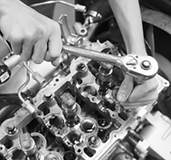Engineering and Technology Quarterly Reviews
ISSN 2622-9374




Published: 26 February 2020
Western-Themed Towns in China: Structural Analysis of Forgeries
Miloš Perišić
Yangtze University, China

Download Full-Text Pdf
10.5281/zenodo.3686821
Pages: 1-15
Keywords: Architecture, China, Fake, Forgery, Replica, Mimicry, Copycat, Kitsch
Abstract
Throughout daily life, most of us are introduced to a variety of architectural themed elements, such as replicas or forgeries that are far from their original birthplace. We often see them in hotels, shopping malls, amusement parks, in various sizes, shapes, and quantities. We experience them in passing, in the short term. However, what happens when such elements are afforded a great opportunity and freedom? Among various things, we can get themed towns. Life in China introduced me to this architectural phenomenon, through the concept of Western-themed towns, which deserves research with the purpose of discovering the fundamental ideas upon which it is based. Through various analyses, this research has covered many structural elements that make up these themed towns. Therefore, the search for a new identity of Chinese architecture, with the help of various cultural fragments, has been found to be crucial in creating the space for the birth of this phenomenon, which has many unique features.
References
- Binkley, S. (2000). Kitsch as a Repetitive System. Journal of Material Culture, 5(2), 142.
- Bosker, B. (2013). Original copies(1st ed., pp. 2, 3, 8, 9, 14, 15). Honolulu: University of Hawai'i Press.
- Campanella, T. (2012). The Concrete Dragon: China's Urban Revolution and What it Means for the World (1st ed., pp. 88, 205). New York, NY: Princeton Architectural Press.
- Capen, E. (1913). The Western Influence in China. The Journal Of Race Development, 3(4), 413.
- Dorfles, G., & Machale, J. (1969). Kitsch. An Anthology of Bad Taste by Gillo Dorfles. With contributions by John McHale [and others], etc (1st ed., pp. 17, 18, 19, 20). London: Studio Vista.
- Emmer, C. (1998). Kitsch Against Modernity. Art Criticism, 13(1), 57, 58.
- Fong, W. (1962). The Problem of Forgeries in Chinese Painting. Part One. Artibus Asiae, 25(2/3), 95, 99.
- Gaiger, J. (2001). The Fake: Forgery and its Place in Art. Sandor Radnoti. The British Journal Of Aesthetics, 41(3), 339-341.
- Hartog, H. (2010). Shanghai New Towns(1st ed., p. 36). Rotterdam: 010 Publishers.
- Knapp, R. (2000). China's old dwellings(1st ed., pp. 3, 325). Honolulu: University of Hawai’i Press.
- Kulka, T. (2002). Kitsch and art (2nd ed., p. 22). University Park, PA: The Pennsylvania State University Press.
- Levi, D. (2005). Does history matter? Perceptions and attitudes toward fake historic architecture and historic preservation. Journal Of Architectural And Planning Research, 22(2), 148-159.
- Lin, Y. (2011). Fake Stuff: China and the Rise of Counterfeit Goods (1st ed., pp. 63, 69). New York: Routledge.
- Negrich, R. (2011). Philosophy of Art Forgeries: The Aesthetic Difference Between Originals and Copies (1st ed., pp. 1, 2, 13). Greater Victoria: University of Victoria.
- Roberts, M. (2018). Censored: Distraction and Diversion Inside China's Great Firewall (1st ed., p. 21). Princeton: Princeton University Press.
- Scott, D. (2016). Art: Authenticity, Restoration, Forgery (1st ed., p. 84). Los Angeles: Cotsen Institute of Archaeology Press.
- Ward, P. (1991). Kitsch in sync - A Consumer's Guide to Bad Taste (1st ed., p. 11). London: Plexus Publishing Limited.
- Zhao, C. (2018). Inside China's incredible 'fake cities': Why even Xi Jinping couldn't stop replicas of the world's greatest landmarks. Retrieved 18 November 2019, from https://www.newsweek.com/fake-cities-exploring-chinas-eerie-replicas-paris-rome-and-jackson-hole-1017249



